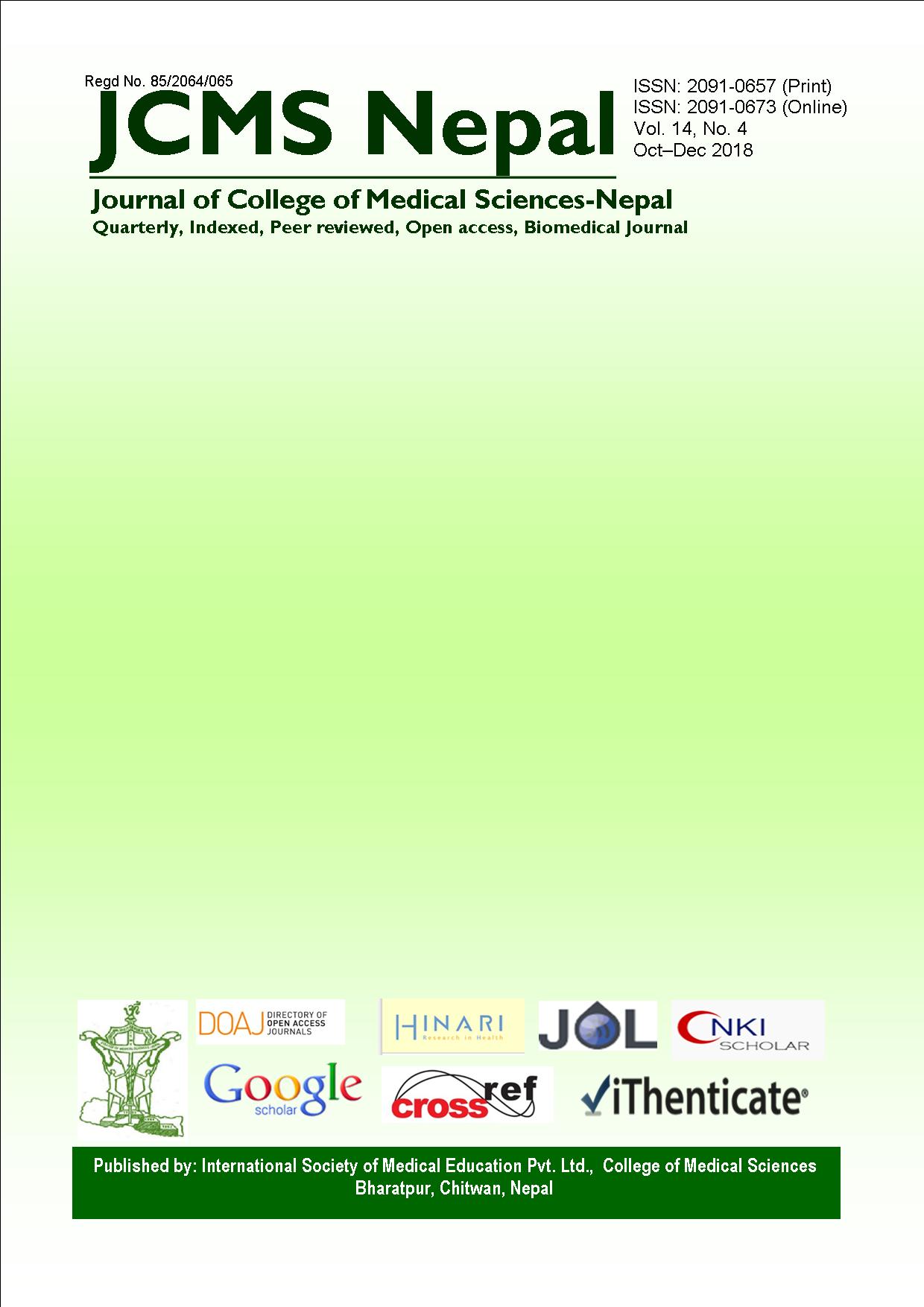Correlation between Body Mass Index and Lipid Profile in a Diabetic population of Central Nepal
DOI:
https://doi.org/10.3126/jcmsn.v14i4.21997Keywords:
body mass index; lipid profile; type 2 diabetes; HDL; LDL.Abstract
Background: Diabetes is an important public health problem as global prevalence of diabetes has nearly doubled reflecting an increase in risk factors like overweight or obesity and dyslipidemia. Both obesity and dyslipidemia share a common pathogenesis associated with “insulin resistance”. Thus the aim of this study is to find out correlation between BMI and lipid profile in type 2 diabetics. Materials and Methods: A cross-sectional study was conducted among 136 type 2 diabetes patients visiting the Diabetes Clinic of College of Medical Sciences, Bharatpur, Nepal during Jan-Dec 2017 and who went through lipid profile testing. The informations were taken from hospital records. To find the significant association between categorical variables chi-square test was used. P-value less than 0.05 were considered as statistically significant. To find the association between continuous variables correlation was used. Results: Out of 136 diabetic patients 77.2% of patients were either overweight or obese. 92.6% of patients had dyslipidemia. Among which 58.1% had high TG levels, 56.6% had high LDL levels, 34.6% had high TC levels and 44.9% had low HDL levels. The overall mean ± SD of age was 54.54±12.03 years and of BMI was 28.54±4.57. Positive correlation was seen between BMI with LDL levels and negative correlation with HDL levels. The correlation with other lipid profile parameters were negative. These correlations were found to be statistically not significant. But statistically significant association was seen between gender with weight, total cholesterol and HDL levels. Conclusions: Obesity and dyslipidemia were highly prevalent. As BMI increases LDL levels increases and HDL levels decreases. Also increased weight and abnormal lipid levels of total cholesterol and HDL were found significantly higher among females than males.
Keywords: body mass index; lipid profile; type 2 diabetes; HDL; LDL.
Downloads
Downloads
Published
How to Cite
Issue
Section
License
This license enables reusers to copy and distribute the material in any medium or format in unadapted form only, for noncommercial purposes only, and only so long as attribution is given to the creator.




